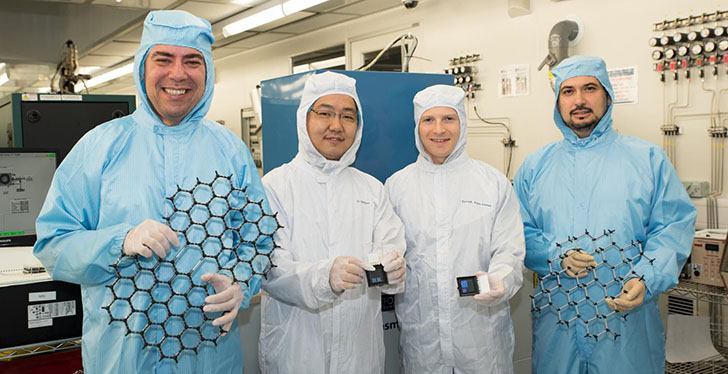
Announced December 24, 2015, scientists at the National University of Singapore (NUS) have demonstrated a new way of controlling electrons by confining them in a device made out of atomically thin materials, and applying external electric and magnetic fields.
Almost all modern technology like motors, light bulbs and semiconductor chips runs on electricity, harnessing the flow of electrons through devices. To control electron behavior, many semi-conductor materials require chemical doping, where small amounts of a foreign material are embedded in the material to either release or absorb electrons, creating a change in the electron concentration that can in turn be used to drive currents.
However, chemical doping has limitations as a research technique, since it causes irreversible chemical change in the material being studied. The foreign atoms embedded into the material also disrupt its natural ordering, often masking important electronic states of the pure material.
The research team was able to replicate the effects of chemical doping in this study by using only external electric and magnetic fields applied to an atomically thin material, titanium diselenide (TiSe2), encapsulated with boron-nitride (hBN). The researchers were able to control the behaviour of the electrons accurately and reversibly, making measurements that had been theoretical up to now. The thinness of the two materials was crucial, confining the electrons within the material to a two-dimensional layer, over which the electric and magnetic fields had a strong, uniform effect.
Because they are atomically thin, two-dimensional superconducting materials would have advantages over traditional superconductors, in applications such as smaller, portable magnetic resonance imaging (MRI) machines.
One specific goal of the research team is to develop high-temperature two-dimensional superconducting materials. Current materials require an extremely cold temperature of -270*C to function, ruling out exciting applications such as lossless electrical lines, levitating trains and MRI machines.